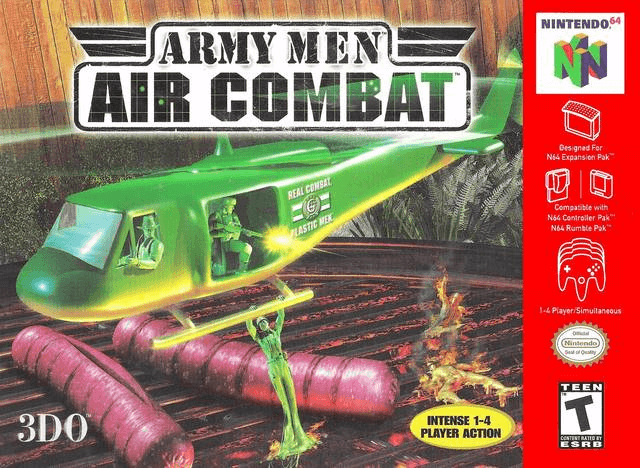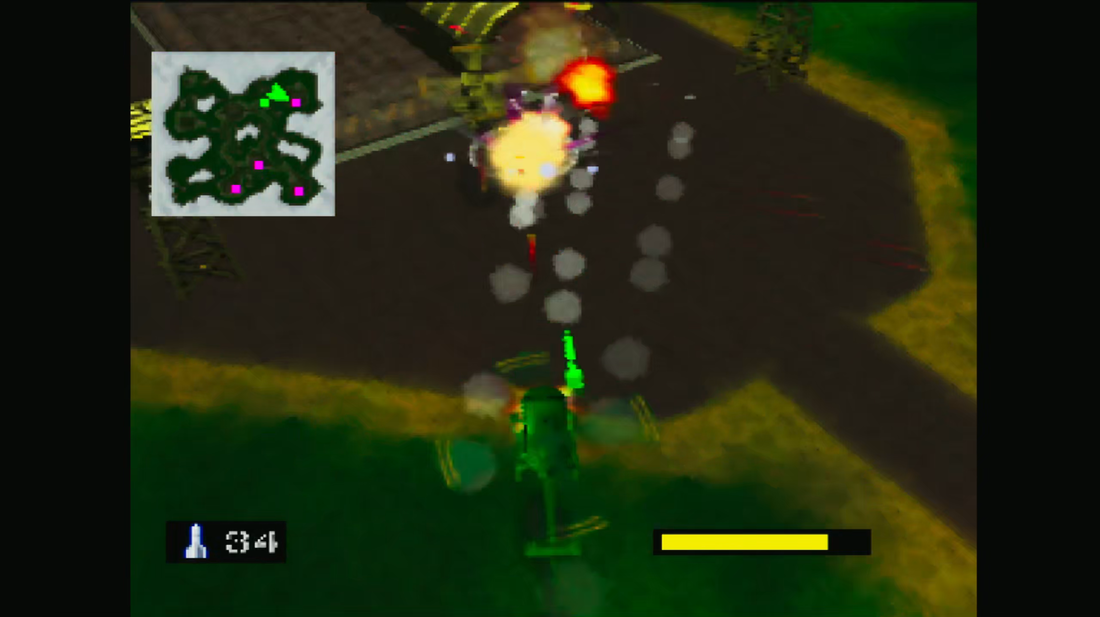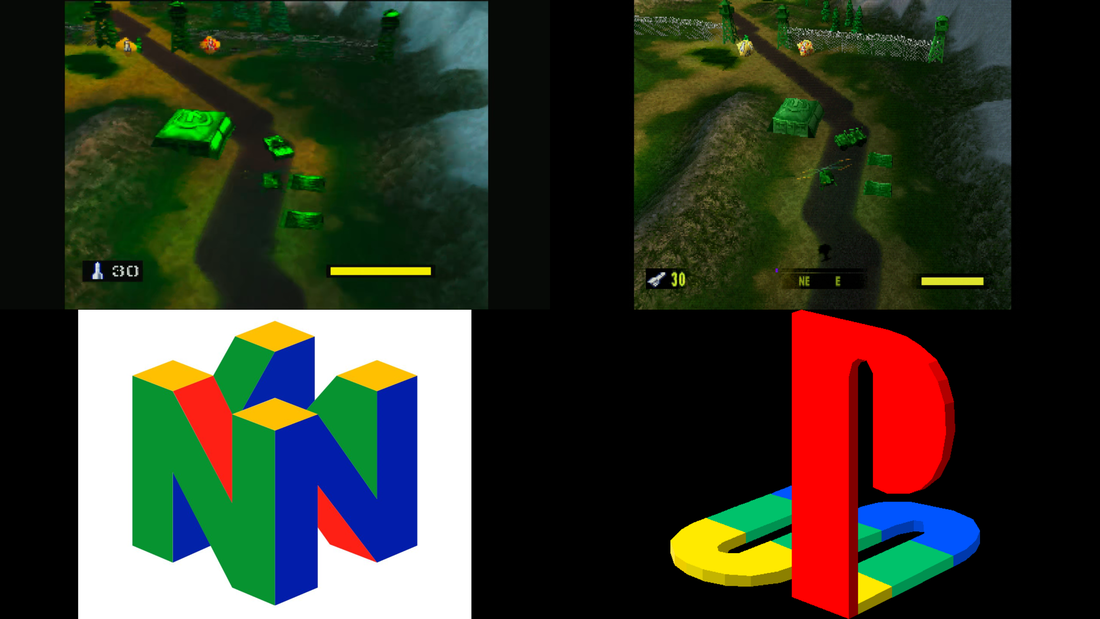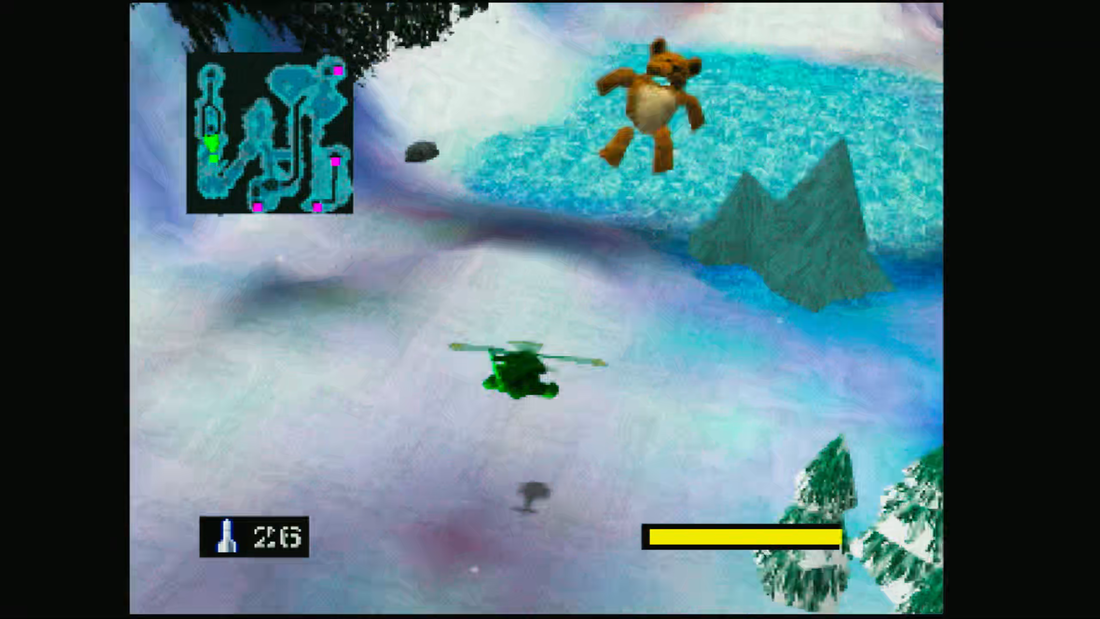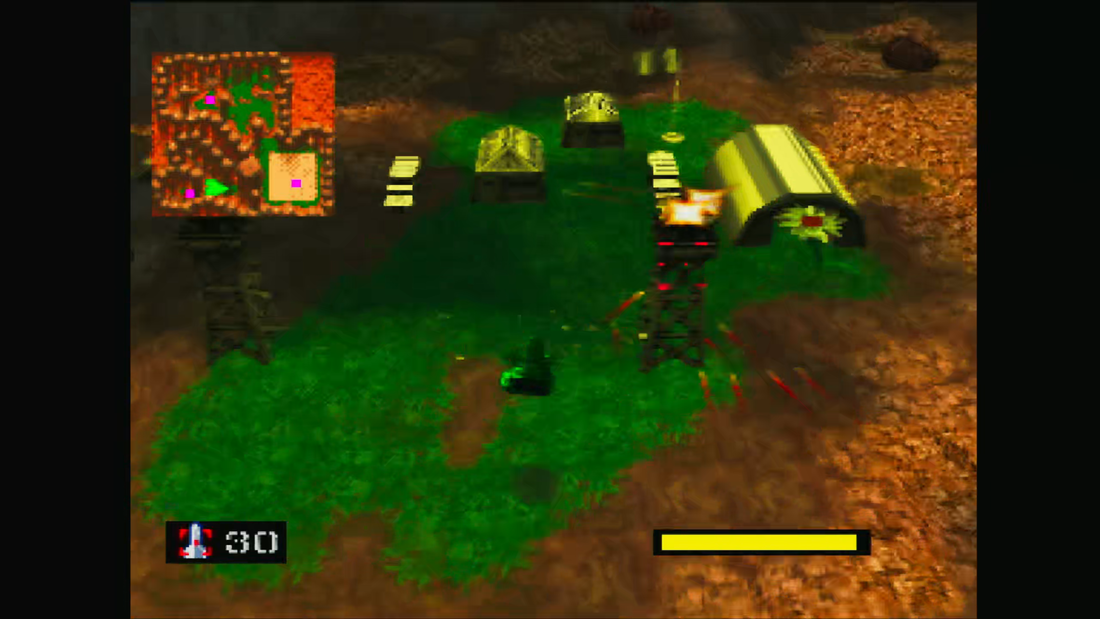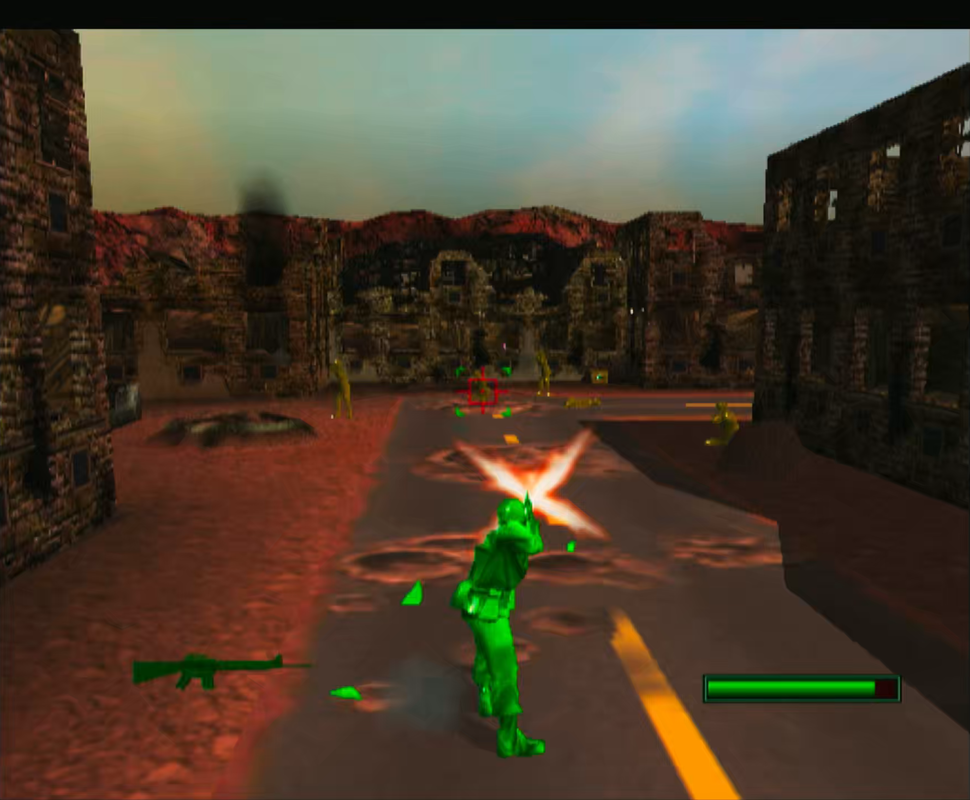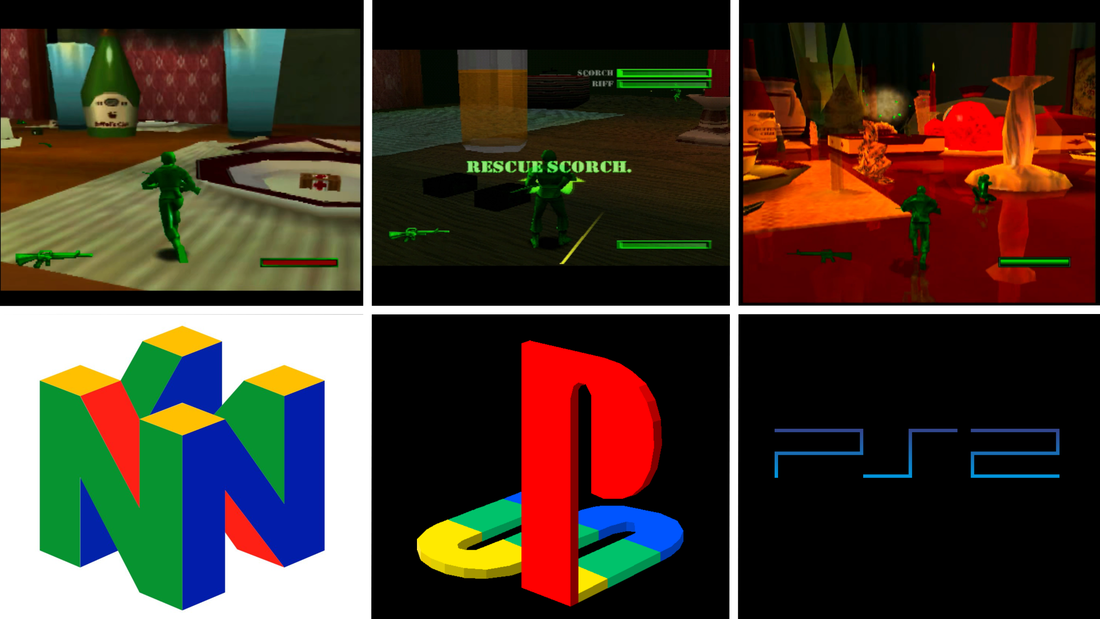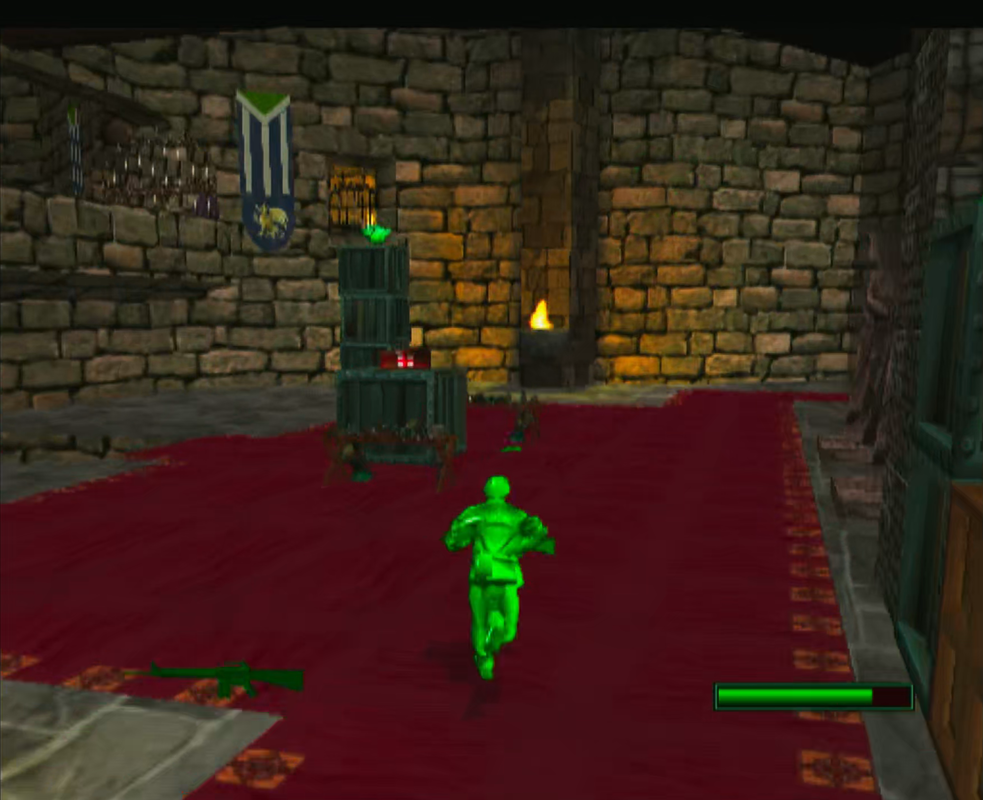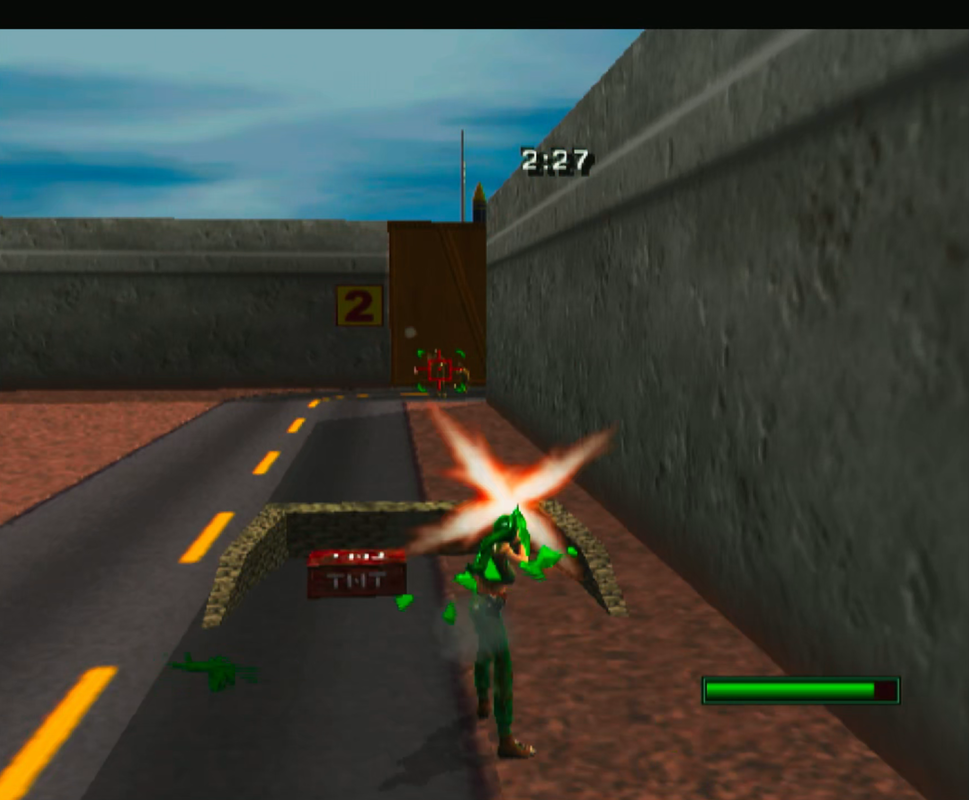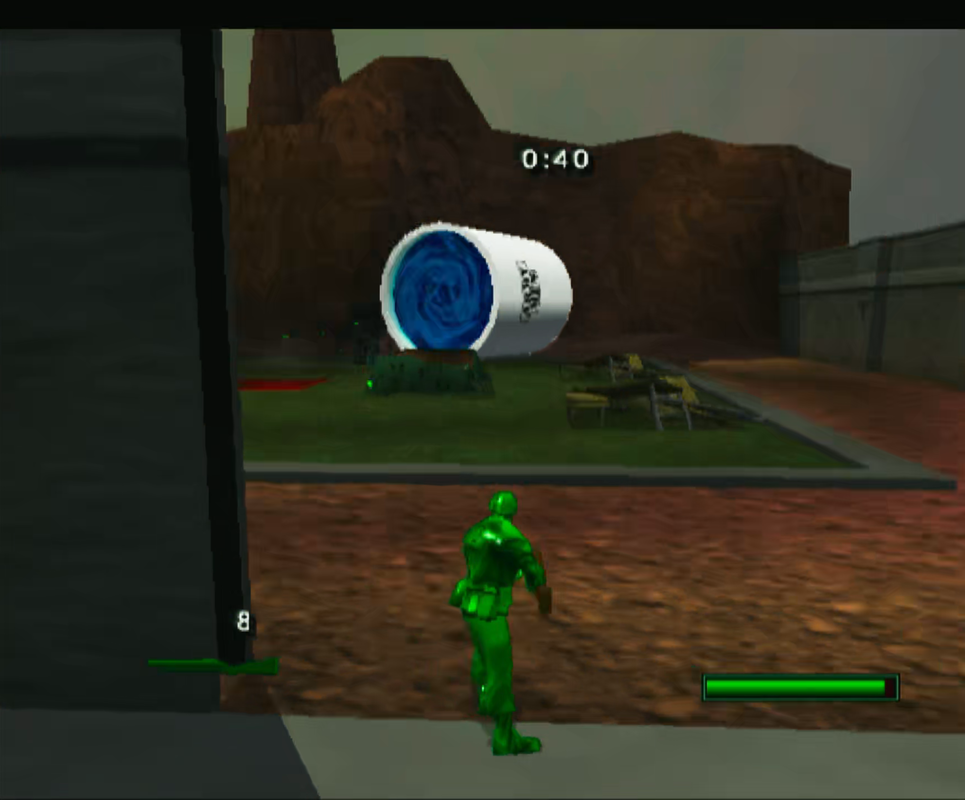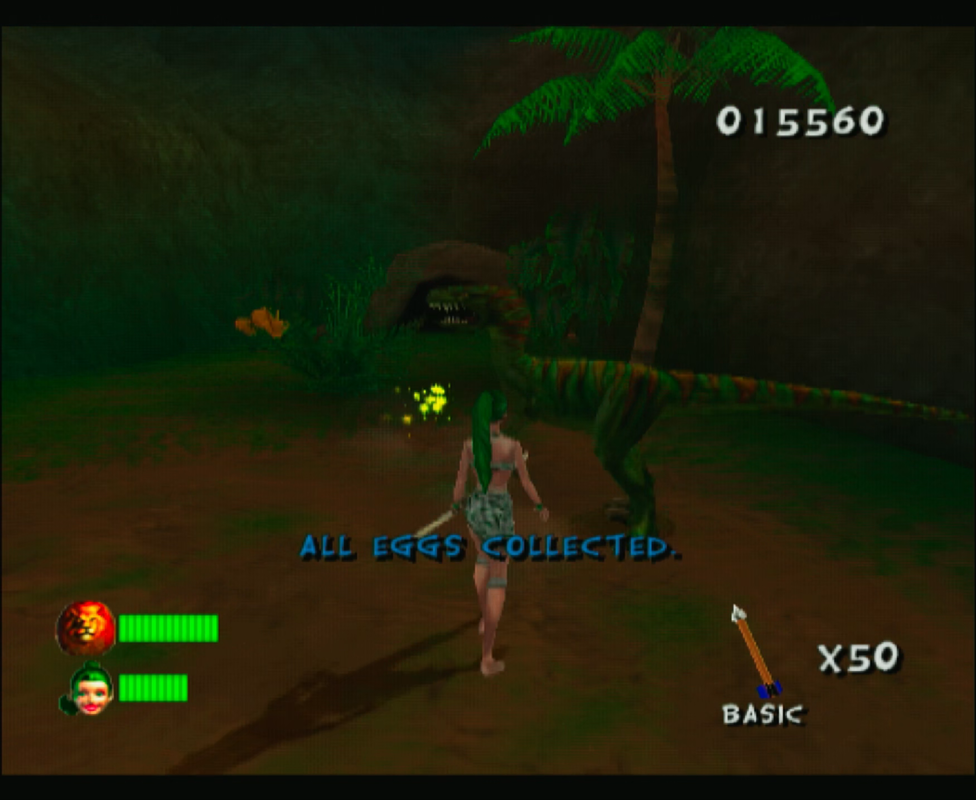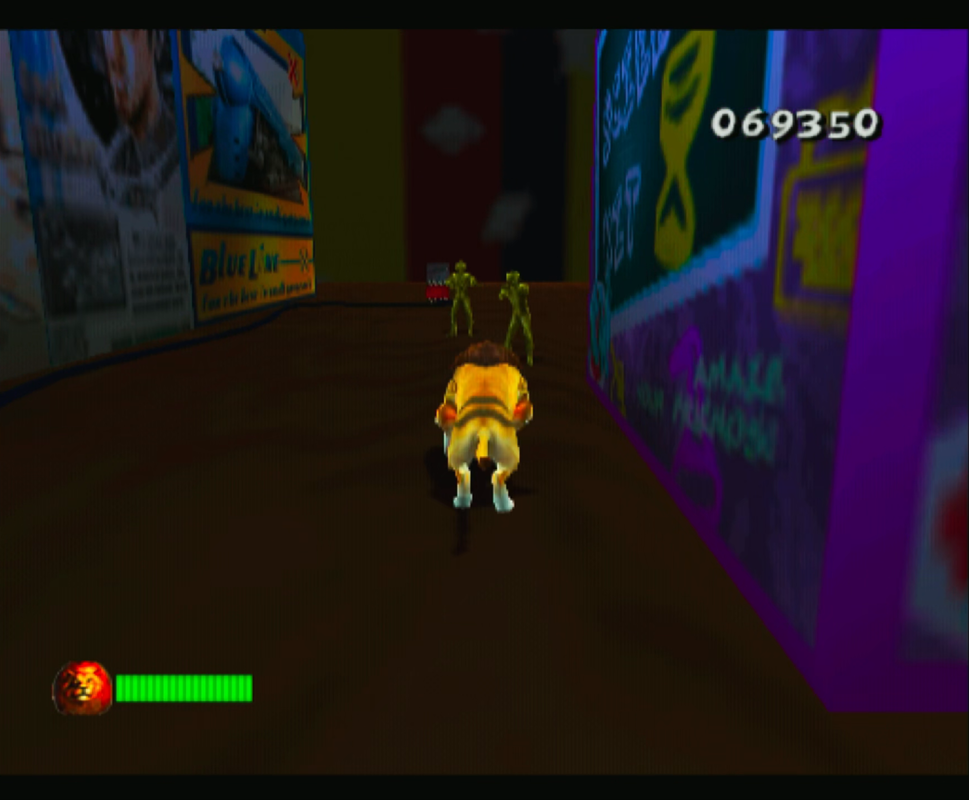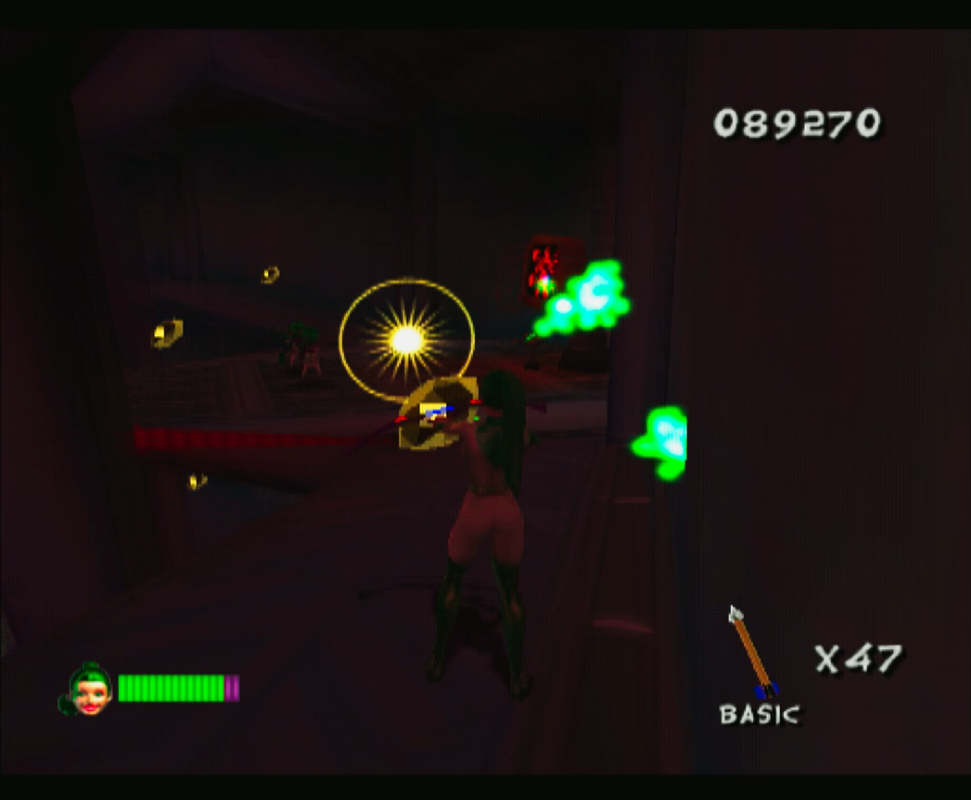Re: Games Beaten 2024
Posted: Thu May 02, 2024 12:44 am
Previous Years: 2015 2016 2017 2018 2019 2020 2021 2022 2023
1. Tormented Souls - Switch
2. Battlefleet Gothic: Armada II - PC
3. Fantasy Empires - PC
4. Vagrant Story - PS1
5. Might and Magic 7: For Blood and Honor - PC
6. Prince of Persia: The Lost Crown - Switch
7. Teenage Mutant Ninja Turtles III: The Manhattan Project - NES
8. Like a Dragon: Infinite Wealth - PS5
9. Tomb Raider Remastered - PC
10. Final Fantasy VII: Rebirth - PS5
11. Unicorn Overlord - Switch
12. Mechwarrior 5: Mercenaries: Solaris Showdown - PC
13. Princess Peach: Showtime - Switch
14. Fida Puti Samurai - PC
15. Fallout New Vegas: Dead Money - PC
16. Fallout New Vegas: Honest Hearts - PC
17. Fallout New Vegas: Old World Blues - PC
18. Wrath: Aeon of Ruin - PC
19. Fallout New Vegas: Lonesome Road - PC
20. Super Buff HD - PC
21. SaGa Emerald Beyond - Switch
Emerald Beyond is the latest in the SaGa series, Akitoshi Kawazu's pet project that keeps getting greenlit by Square even though it's weird compared to other RPGs. This game iterates on the systems in Scarlet Grace; the base combat mechanics will feel familiar, but they've pulled back in stuff from previous games to create deeper combat and better character building.
The game features five protagonists (technically six, but one of the starts is a pair of them). Your choice of protagonist will determine the various scenarios you experience through the game, alongside the various choices you make. Some scenarios are shared between protagonists, while others are unique. And even the shared ones have unique content for each one. Like SaGa Frontier, you're encouraged to play through the game multiple times with each starting character, but here the scenarios are much longer. And unlike Frontier, there isn't an extra protagonist that ties up the loose threads. So feel free to do just one and come back later to the rest.
Once you're in game you'll find that it's got a lot of elements of visual novel presentation. Instead of wandering around a world map with random encounters, you have a limited area to move and fixed encounters, almost always tied with story segments. The game lets you know where all the story hotspots are, and you're free to engage them in any order, though sometimes you have mutually exclusive options. Sometimes there are also grind spots, where you can trigger optional combats. Some story segments are just conversations, while others include a monster fight. Your goal is to move through the various worlds, solving the problems of each world, and collect the MacGuffins to trigger the final boss.
Combat-wise the game starts with the same timeline that Scarlet Grace used. All the combatants are placed on a line, indicating the turn order. The moves you select can move you and enemies around on this line, and each action will also have an area of influence on the timeline. This is the first major component of the strategy. Whenever two characters on the same side have their areas of influence touch they begin a combo. Each subsequent attack in the combo does more damage, and getting a high enough damage multiplier can trigger a second set of random actions by these characters. But be careful; since some actions move combatants around, you can accidentally break your own combo by moving an enemy into the chain and removing the links. There's a second mechanic for getting big damage, and that's having a character that does not have any other character on either side within two spaces on each side (and you need two spaces on each side, no cheating by being at the far end of the timeline) and doesn't connect their area of influence with a friendly (as combos take precedence). In this case, the character gets the same full set of battle points that you started the turn with to go on a personal combo rampage. Like with Scarlet Grace, the number of actions you can take is based on your battle points, which are gained at the start of the turn and each action costs different amounts. The formations you pick can influence the rate you gain and can reduce the cost of your actions under certain circumstances. Weaving all this together is the most important part of winning battles, though there can also be a fair amount of luck (sometimes you get bad setups and lose agency).
On the character building end, a lot of cues are taken from SaGa 2. Humans are the primary type; they gain stats randomly after battle based on the types of stats they exercise in combat (so you're free to build characters however you like, it'll just take some time to be effective), and they have the ability to randomly learn techs during battle. Their versatility gives them a lot of power, but it does require some luck to get the powerful techs. Monsters are next, and here they are far more useable than previous SaGa games. Instead of eating meat to transform according to arcane formula, here monsters can store the essences of enemies that are killed within their equippable gear. These essences correspond to techs, while they gain stats the same way as humans. If you want to get rid of one of your techs in favor of something else, you have a special unleash move that uses a tech for a single BP and then wipes it from memory. Returning from SaGa 2 is the robots, who gain all their stats from their equipped gear, along with their techs. As a result, their power curve is much more of a stairstep, as a new piece of gear represents a jump, but then they stay flat until the next piece of gear. There's a couple other classes described in the in-game tips that I didn't encounter, but they also have their own unique ways of gaining techs or other power. The systems give you a fair amount of flexibility in building your teams. And unlike some other SaGa games, there doesn't appear to be any significant learning biases. One of my characters was presented as a caster, but I was able to make her a two handed sword user with little difficulty, and she did the job quite well.
The game has fairly low production values, due to the team focusing on the mechanics and acknowledging that the series is niche and said niche fanbase is more focused on the mechanics. The graphics get the job done in terms of conveying what's going on, but it's definitely PS2 level graphics. More egregious is the localization; it definitely feels like they got some budget translators. It's not bad, but it definitely has that feel of some of the basic translations we used to get back in the day after games started to have more text but before localizer were willing to do more than a bare bones translation. It doesn't really detract, but I did notice it. Overall, this is a solid entry in the SaGa series, and the battle system has enough decision points that it stays engaging without having so much that every fight turns into a slog.
1. Tormented Souls - Switch
2. Battlefleet Gothic: Armada II - PC
3. Fantasy Empires - PC
4. Vagrant Story - PS1
5. Might and Magic 7: For Blood and Honor - PC
6. Prince of Persia: The Lost Crown - Switch
7. Teenage Mutant Ninja Turtles III: The Manhattan Project - NES
8. Like a Dragon: Infinite Wealth - PS5
9. Tomb Raider Remastered - PC
10. Final Fantasy VII: Rebirth - PS5
11. Unicorn Overlord - Switch
12. Mechwarrior 5: Mercenaries: Solaris Showdown - PC
13. Princess Peach: Showtime - Switch
14. Fida Puti Samurai - PC
15. Fallout New Vegas: Dead Money - PC
16. Fallout New Vegas: Honest Hearts - PC
17. Fallout New Vegas: Old World Blues - PC
18. Wrath: Aeon of Ruin - PC
19. Fallout New Vegas: Lonesome Road - PC
20. Super Buff HD - PC
21. SaGa Emerald Beyond - Switch
Emerald Beyond is the latest in the SaGa series, Akitoshi Kawazu's pet project that keeps getting greenlit by Square even though it's weird compared to other RPGs. This game iterates on the systems in Scarlet Grace; the base combat mechanics will feel familiar, but they've pulled back in stuff from previous games to create deeper combat and better character building.
The game features five protagonists (technically six, but one of the starts is a pair of them). Your choice of protagonist will determine the various scenarios you experience through the game, alongside the various choices you make. Some scenarios are shared between protagonists, while others are unique. And even the shared ones have unique content for each one. Like SaGa Frontier, you're encouraged to play through the game multiple times with each starting character, but here the scenarios are much longer. And unlike Frontier, there isn't an extra protagonist that ties up the loose threads. So feel free to do just one and come back later to the rest.
Once you're in game you'll find that it's got a lot of elements of visual novel presentation. Instead of wandering around a world map with random encounters, you have a limited area to move and fixed encounters, almost always tied with story segments. The game lets you know where all the story hotspots are, and you're free to engage them in any order, though sometimes you have mutually exclusive options. Sometimes there are also grind spots, where you can trigger optional combats. Some story segments are just conversations, while others include a monster fight. Your goal is to move through the various worlds, solving the problems of each world, and collect the MacGuffins to trigger the final boss.
Combat-wise the game starts with the same timeline that Scarlet Grace used. All the combatants are placed on a line, indicating the turn order. The moves you select can move you and enemies around on this line, and each action will also have an area of influence on the timeline. This is the first major component of the strategy. Whenever two characters on the same side have their areas of influence touch they begin a combo. Each subsequent attack in the combo does more damage, and getting a high enough damage multiplier can trigger a second set of random actions by these characters. But be careful; since some actions move combatants around, you can accidentally break your own combo by moving an enemy into the chain and removing the links. There's a second mechanic for getting big damage, and that's having a character that does not have any other character on either side within two spaces on each side (and you need two spaces on each side, no cheating by being at the far end of the timeline) and doesn't connect their area of influence with a friendly (as combos take precedence). In this case, the character gets the same full set of battle points that you started the turn with to go on a personal combo rampage. Like with Scarlet Grace, the number of actions you can take is based on your battle points, which are gained at the start of the turn and each action costs different amounts. The formations you pick can influence the rate you gain and can reduce the cost of your actions under certain circumstances. Weaving all this together is the most important part of winning battles, though there can also be a fair amount of luck (sometimes you get bad setups and lose agency).
On the character building end, a lot of cues are taken from SaGa 2. Humans are the primary type; they gain stats randomly after battle based on the types of stats they exercise in combat (so you're free to build characters however you like, it'll just take some time to be effective), and they have the ability to randomly learn techs during battle. Their versatility gives them a lot of power, but it does require some luck to get the powerful techs. Monsters are next, and here they are far more useable than previous SaGa games. Instead of eating meat to transform according to arcane formula, here monsters can store the essences of enemies that are killed within their equippable gear. These essences correspond to techs, while they gain stats the same way as humans. If you want to get rid of one of your techs in favor of something else, you have a special unleash move that uses a tech for a single BP and then wipes it from memory. Returning from SaGa 2 is the robots, who gain all their stats from their equipped gear, along with their techs. As a result, their power curve is much more of a stairstep, as a new piece of gear represents a jump, but then they stay flat until the next piece of gear. There's a couple other classes described in the in-game tips that I didn't encounter, but they also have their own unique ways of gaining techs or other power. The systems give you a fair amount of flexibility in building your teams. And unlike some other SaGa games, there doesn't appear to be any significant learning biases. One of my characters was presented as a caster, but I was able to make her a two handed sword user with little difficulty, and she did the job quite well.
The game has fairly low production values, due to the team focusing on the mechanics and acknowledging that the series is niche and said niche fanbase is more focused on the mechanics. The graphics get the job done in terms of conveying what's going on, but it's definitely PS2 level graphics. More egregious is the localization; it definitely feels like they got some budget translators. It's not bad, but it definitely has that feel of some of the basic translations we used to get back in the day after games started to have more text but before localizer were willing to do more than a bare bones translation. It doesn't really detract, but I did notice it. Overall, this is a solid entry in the SaGa series, and the battle system has enough decision points that it stays engaging without having so much that every fight turns into a slog.
